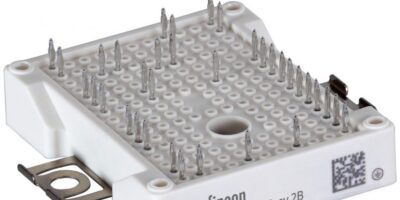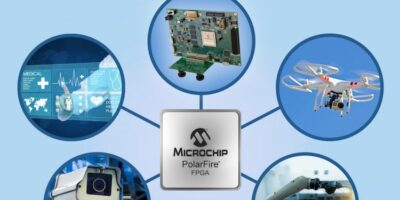Three 15Mbits per second photocouplers from Renesas Electronics are designed to withstand the harsh operating environments of industrial and factory automation equipment. They have been developed in response to the trend for higher voltage, compact systems for safety standards and eco-friendly designs that require smaller ICs with lower power consumption. The RV1S9x60A family is claimed to have best-in-class low threshold input current (IFHL) ratings. The RV1S9160A (SO5) operates at 2.0mA, the RV1S9060A (LSO5) operates at 2.2mA and the RV1S9960A (LSDIP8) operates at 3.8mA.
Lower power consumption allows the RV1S9x60A photocouplers to suppress power supply heat generation. Operation at high temperatures, up to 125 degrees C (+110 degrees C for RV1S9960A) saves board space by allowing the photocoupler to be mounted near an IGBT or MOSFET power device. The devices are targeted at DC to AC power inverters, AC servo motors, programmable logic controllers (PLCs), robotic arms, solar and wind input power conditioners, and battery management systems for energy storage and charging.
The RV1S9x60A photocouplers feature high common mode rejection (noise tolerance) up to 50 kV/ micro seconds (minimum) to protect microcontrollers and other I/O logic circuits from high voltage spikes while transferring high-speed signals. The RV1S9x60A family also offers a variety of packages with the smallest footprint for each reinforced isolation (up to 690Vrms), and minimum creepage distances of 4.2 to 14.5mm to ensure safe operation.
The RV1S9160A, RV1S9060A and RV1S9960A photocouplers operate at low voltages, from 2.7 to 5.5V. Isolation voltages are 3,750Vrms (RV1S9160A), 5,000Vrms (RV1S9060A), and 7,500Vrms (RV1S9960A).
High temperature operation from -40°C to +125°C (RV1S9160A and RV1S9060A), and from -40°C to +110°C (RV1S9960A)
The supply current is 2.0mA (max), with a low pulse width distortion at 20 nanoseconds (max). Propagation delay is 60 nanoseconds max and propagation delay skew is 25 nanoseconds max.
The RV1S9x60A 15Mbits per second photocouplers are available now from Renesas Electronics’ worldwide distributors.
Renesas Electronics specialises in microcontrollers, analogue, power and SoC products for a range of automotive, industrial, home electronics, office automation, and information communication technology applications.







